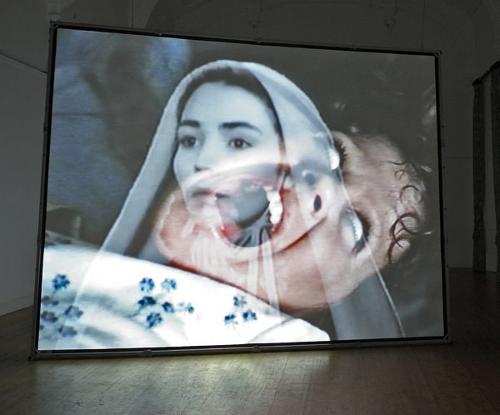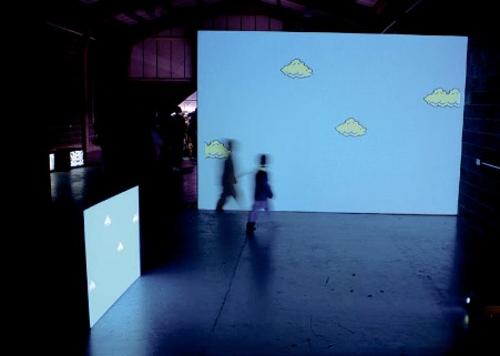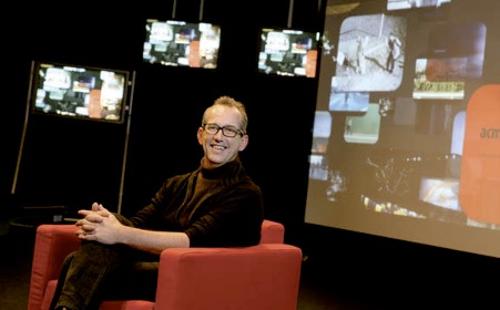
Each year Hatched showcases work by graduates from tertiary art schools across the country. As a glimpse of this transitional time, it's interesting that this year a number of the artists draw upon nostalgia, the what is lost.
Fiona Gavino's Inwardly outbound consists of three large sculptures woven from newspaper, and glazed with a sap-like resin. Existing as three recoiling forms (in one, a pot morphs into plant fronds) they appear frozen mid-movement, their spindly limbs evocative of Giacometti. The forms are botanical, but textured with traces of their production, standing as a plaintive tribute to weaving traditions and ecological tactility, an apocalyptic apparition of a nature/culture collision. Raising an interesting question about the importance of placement, the work shares a room with another artist's video, which imbues a low reverberating soundtrack. While unintentional, the effect amplifies its bleak vision.
In Julie Monro-Allison's series The ethnographer's evening walk, the fantasy of the natural sciences is evoked, the title suggesting anthropologist Bronislaw Malinowski's physical body's jauntily musing territories after hours. Using the traditions of fibre basketry, stones, leather and hair are woven into ceremonial masks that hang upon the wall, including animal jaws and hairy plaits extending from misshapen forms. The culture being referenced is unclear, it's cultureless, as the imaginary of historical cultural construction is given a clever physical dimension.
Natural history is explored, more literally, in a number of other works like Angela Armstrong's cyanotypes of sea flotsam placed in Fowlers preserving jars featuring a striking stewy botanical discoloration from salt. Another set of marine animals, stored in antique wooden drawers, while more detailed, remain somehow less evocative of the original organisms. A sculpture by Lisa Wise of ceramic fingers pinned like specimens is a more blunt exploration of similar themes.
There is an acute self-awareness in the video installation by Tom Ryadi Freeman, which draws upon nostalgia of a more personal kind. Positioned as a 'study' of Nicole Kidman, the artist appears as performer in his own tribute to the actor. Low-fi sequences show him laconically enacting/evoking Kidman using visual cues from various movies, wearing a home-made rainbow tee-shirt like the one worn by Kidman in BMX Bandits, attempting bunny hops on a bike, and a bleaching session where his hair is turned burnt-orange, then blonde, like in The Others. While the work is comic, the natural sound and slow sequences hint at the lonely hours spent in the studio. The suggestion of this isolation: Freeman without an immediate audience, and playing, gestures to the power of pop culture symbology, childhood crush/identification, and the disjunction between a child's dreams and experience, an experience that is both largely alone, and imaginary.
Childhood is also explored in Bronywn Thompson's powerful projection installation, although here the experience as mediated through the nostalgic gaze is problematised with a heavier undercurrent. The looped visual begins with a close-up portrait of two young 'girls', one stroking the other's hair. As the work descends, a soundtrack of movement increases, and the relationship between the two peaks in violence, before repeating the soothing, patting, action again. The innocence of childhood is cast as an ambivalent state, calling the viewer, as witness, into a negotiation of what is actually happening in this relationship, is it fantasy/sinister, natural or unnatural?
Like all Hatched exhibitions, the selection varies, this year some of the most ambitious works, like the large fragmented assemblage piece by Caz Rodwell using mixed media elements to conjure sex and death, or the big woven textile work by Natalie Williamson, are less impressive, while works such as Imbi Davidson's small studies of landscape, are successful precisely for their simplicity.












